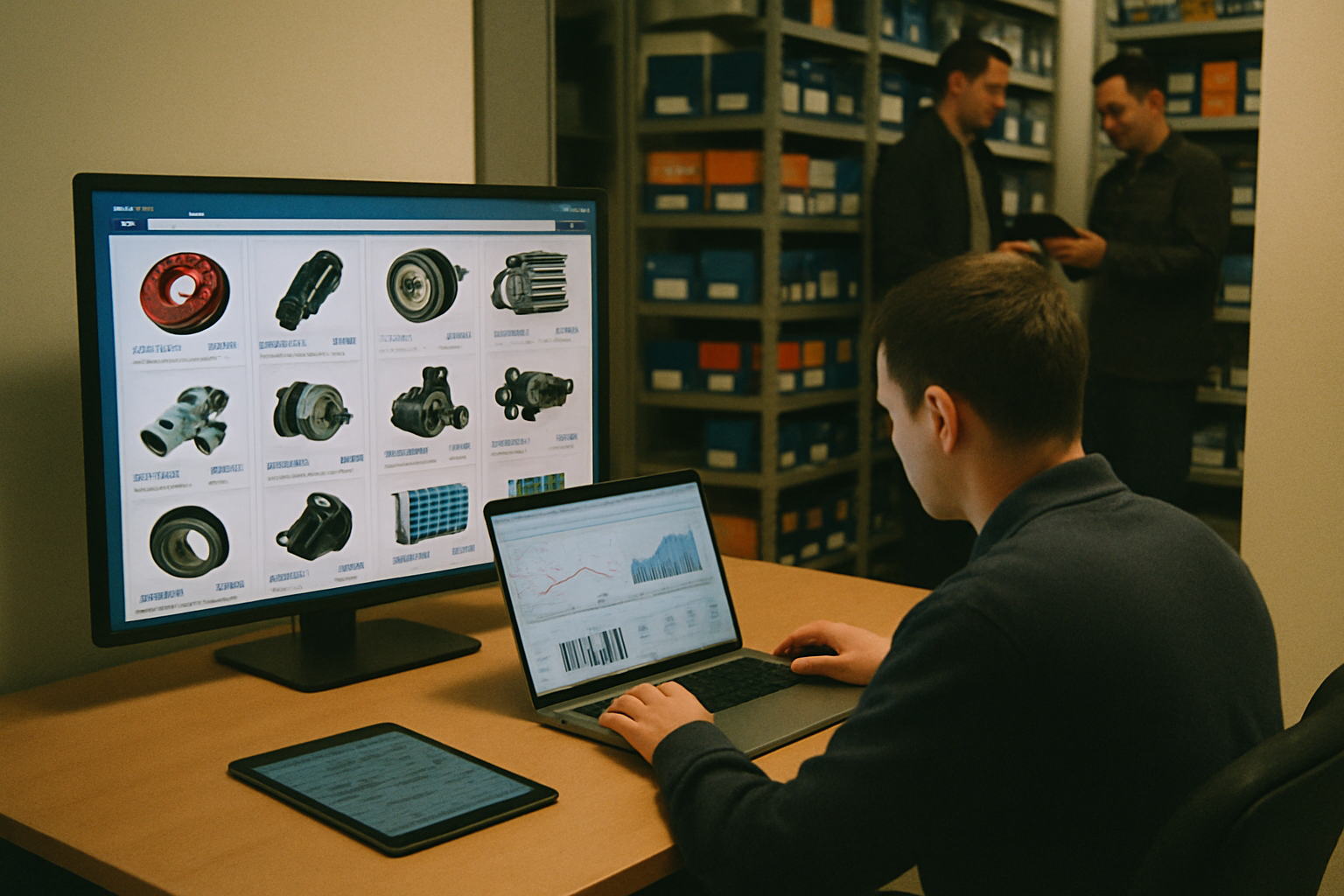In the past year, the used vehicle market in Brazil reached historic numbers with nearly 16 million units sold, according to data from Fenauto. This trend—driven by the rising cost of new cars, high interest rates, and credit restrictions—directly impacts the auto parts industry, which now faces growing demand for repairs and replacements.
As the average vehicle age increases, particularly cars older than ten years, repair shops and retailers are seeing a surge in demand for preventive and corrective parts. Pre-owned vehicles present both challenges and opportunities for suppliers who must expand their portfolios with a focus on quality and availability.
Digitalization: driving efficiency in auto parts distribution
Beyond market growth, the auto parts sector is undergoing a major digital shift. According to a study by the Brazilian E-commerce Association (ABComm) in partnership with the National Auto Parts Distributors Association (ANDA), online auto parts sales grew by more than 40% in 2024. This growth is driven by consumer and workshop confidence in online purchases and the expansion of platforms like Mercado Livre and Shopee.
Manufacturers and distributors are adopting technologies that digitize catalogs and automate inventory and pricing control. Real-time data updates help reduce errors, prevent stockouts, and improve service speed. For instance, some distributors are already syncing their inventory with retailers and workshop systems, streamlining replacement processes and commercial management.
This technological progress improves internal efficiency and expands the digital availability of parts, making it easier for workshops and consumers to find the right solutions.
Digital platforms bridge the gap between distributors, retailers, and customers
At the heart of this transformation is the adoption of integrated platforms like Alephee, which connects different players in the replacement parts chain.
This tool allows for real-time synchronization of catalogs, inventory, and pricing—facilitating both B2B and B2C sales across multiple channels.
With Alephee, distributors can instantly update their digital portfolios, while retailers and workshops receive updates in real time, reducing rework and improving sales accuracy.
Additionally, the platform offers full traceability of operations, ensuring control and security for all involved.
Direct impact on the end user: more speed, variety, and trust
For the end customer—whether a shop owner, retailer, or buyer—digitalization brings practical benefits. Finding the right parts becomes easier, with instant access to detailed product, inventory, and pricing information.
This transparency aids decision-making, boosts confidence, and saves time by reducing the need for multiple contacts or trips.
Repair shops can streamline their services, and retailers expand their reach through increasingly accessible and integrated digital channels.
A moving sector: challenges and opportunities
An aging vehicle fleet and the complexity of the replacement chain require companies to invest in innovation and digital integration to remain competitive.
Those embracing catalog digitalization, inventory automation, and omnichannel strategies are better positioned to take advantage of the growing market for used and pre-owned vehicle parts.












